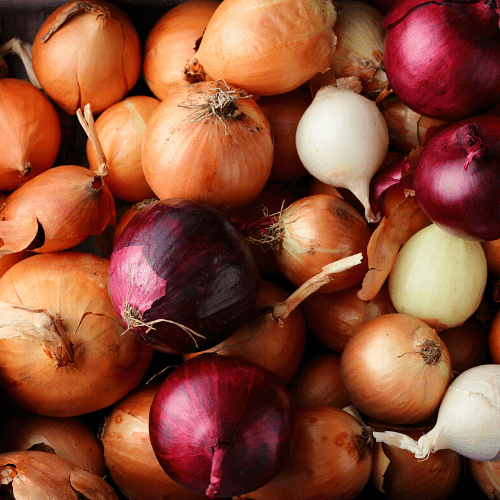Updated:February28,2024 Here at NHG, we know you love pretty blooms that are easy to plant,…
You Should be Growing Onion Sets! Here’s Why

Onions are an easy-to-grow, versatile crop that packs a huge punch of flavor. Even if you don’t have the space for large beds, a few slips tucked into pots here and there yield delicious green tops that can be snipped into salads and soups. Here’s how to take a bundle of tiny green slips and turn them into your favorite kitchen staple:
Begin with great soil. Raised beds are ideal, but not absolutely necessary. Amend with good compost 8″-10″ deep. Remember, excellent drainage (never any standing water) is key for onions.
Add an organic fertilizer, such as this Espoma Bio-Tone, at the time of soil prep and mix well. The Bio-Tone has the added benefit of boosting beneficial micro-organisms for better overall soil health.
You’ll find bunches called ‘sets’ of baby onion plants known as ‘slips’ in at NHG in January. Varieties of the ‘short day’ and ‘intermediate day’ classifications do best in our area, and we offer red, yellow and white onions suited to north Texas gardening.
There are typically about 100 individual slips in each bunch. Begin by removing the wire band that holds them together, and gently tease them apart to sort them by size. The largest slips can be selected for planting in your raised beds for bulbing while the smallest slips can be tucked in to other beds or containers to harvest for their delicious green tops.
Planting is simple: make a small hole about 1″ deep and insert the slip root side down. It’s better to err on the side of shallow; slips planted too deeply will not bulb well.
Gently firm the soil around the slip to help hold it upright. If they fall over during watering, there’s no need to worry as they will right themselves soon.
Water the newly planted slips with a gentle sprinkle of water. You can top dress with a general organic fertilizer about every two weeks during the growing period, about 3-4 months.
The green tops will begin to wither, yellow and fall over as the bulb underground matures–that’s when you know it’s time to harvest! If any onions begin to ‘bolt’ — produce a flower stalk — dig and use those first, as they won’t keep well.
Brush excess soil from your harvested onions and leave the tops on them to cure. Place them in a dry, cool place out of direct sunlight and allow them several days to dry. When this is complete, you can trim off the spent tops and store the cured bulbs in breathable mesh sacks to use later.
Get more details with NHG’s onion guide. Our garden advisors are always available to answer your questions. Visit North Haven Gardens in Dallas, TX to get the best selection and grow your own onions this year!

